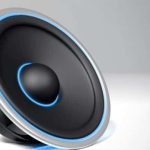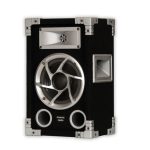Knowing the different power specifications that come with speakers is especially important when hooking up a speaker with a stereo system or amplifier. Getting the best sound requires matching the power between the speaker and amp. Otherwise, you’ll end up blowing your new speaker just in case you connect it to an amp that exceeds the speaker’s power limits. Power ratings tend to be quite confusing, especially among people who aren’t skilled in how speakers work. Here’s what you need to know about speaker power ratings and specifications.
Minimum Power Rating
Speakers come with a minimum power rating. It’s basically the lowest amount of power that can be fed to a speaker to make it produce sound. Basically, this power rating is hardly a major concern. Feeding your speaker with power below its rating may not do any harm to the speaker. You’ll only fail to get sound from the speaker. In most cases, amplifiers can always handle the minimum power of most standard speakers, so it’s not such an important specification, but it matters.
Maximum Power Rating
The maximum power rating of a speaker is the highest amount of power that a speaker can safely handle without distorting. This rating is extremely important. You’ll often see the speaker label written as “max power input”. If you exceed this rating, the speaker will distort or worst burn out. Thus, if a speaker is rated to have a max power input of 200 watts, feeding it with an amplifier that has a power output of 500 watts will lead to distortion or blowing the speaker, especially when you put the volume level of the amp all the way up. Thus, when buying a speaker, ensure it can withstand the power output of your amp.
RMS Rating
The RMS power rating is one of the most important specifications to check out on a speaker. RMS is an abbreviation for “root mean square”. It’s also known as continuous power rating. Basically, this is the amount of continuous power that a speaker can handle for a prolonged period of time without distortion.
Generally, the RMS of an amplifier should be twice that of a speaker. However, it’s not always possible to find an exact RMS rating after doing the math. If you’re unable to find the matching RMS, you’ll multiply the RMS of the amplifier by 1.25 and 0.8 to get a good range. For instance, if your speaker has an RMS rating of 150 watts, then the amplifier should have an RMS rating of 300 watts. However, if you can’t get an exact match, get a speaker within the range of (300 * 0.8) and (300 * 1.25), which will give you a range of between 240 to 375 watts RMS.
If you feed your speaker with an amplifier that has an RMS rating that exceeds the ideal range, then you’ll overpower the speaker and this may damage it. Also, if the RMS rating is below the ideal range, you’ll get a clipping sound.
Peak Power
The peak power of a speaker, also known as dynamic power, is the maximum amount of power that a speaker may handle within short bursts before popping. For instance, if a speaker has a peak power of 400 watts, it means that it can handle 400 watts in a short burst without popping. Peak power is the most commonly advertised rating. Most marketers give exaggerated peak power specs. Thus, peak power is not very reliable for assessing the real performance of a speaker.
Generally, peak power is usually higher than RMS. For instance, if a speaker has an RMS rating of 50 watts and a peak power of 100 watts, it means that it can safely handle 50 watts of continuous power and 100 watts of short-term bursts.
How Power Ratings Are Related To Impedance
Impedance goes hand in hand with the power rating of a speaker. Basically, impedance refers to the resistance to power flow. A lower impedance rating means that the speaker can allow more power to flow through it. Similarly, a higher impedance rating means that the speaker will allow less power to flow through it. Most amplifiers are designed with an impedance of 8 ohms. Thus, consider the impedance of the amplifier before investing in a new speaker.
Generally, it’s safe to wire a speaker with a higher impedance rating to an amp that has a lower impedance rating, but never wire a speaker with a lower impedance rating to an amp with a higher impedance rating. For example, it’s safe to wire a speaker with an impedance of 8 ohms to an amp with an impedance of 4 ohms. However, don’t wire a speaker with an impedance of 4 ohms to an amp with an impedance of 8 ohms.
In conclusion
When buying speakers, ensure their impedance and power rating match with those of an amplifier to get high-quality sound and to avoid burning out your speaker. For instance, never wire a speaker to an amp that delivers higher RMS power than what the speaker can handle. If you do so, the speaker will be unable to dissipate heat energy from the amp. The speaker coil and other components may end up burning out.
Also, avoid wiring a speaker to an amp that has a lower power output than the speaker’s minimum power rating. If you do so, the amp will be unable to output enough power to feed the speakers. You’ll end up trying to put the volume all the way up. Consequently, the amp will overheat and send clipped sound to the speakers. In the end, the amp may burn out.
Now that you have a proper understanding of speaker power rating specifications, never take those numbers you see on speaker labels for granted. Taking the power ratings for granted may get you into trouble with receiving low-quality sound or damaging your new speaker or amplifier. Don’t feel under pressure to do the math on power ratings since it’ll save you from major disappointments.
Michael Evanchuk is a San Francisco-based sound engineer with 20 years’ experience installing, troubleshooting, and repairing commercial, automotive, and household sound equipment. Evanchuk owns an auto stereo center, where he offers highly competitive car audio installation and repair services. He has written dozens of articles on different sound engineering topics, all of which have been published in leading journals, blogs, and websites.





